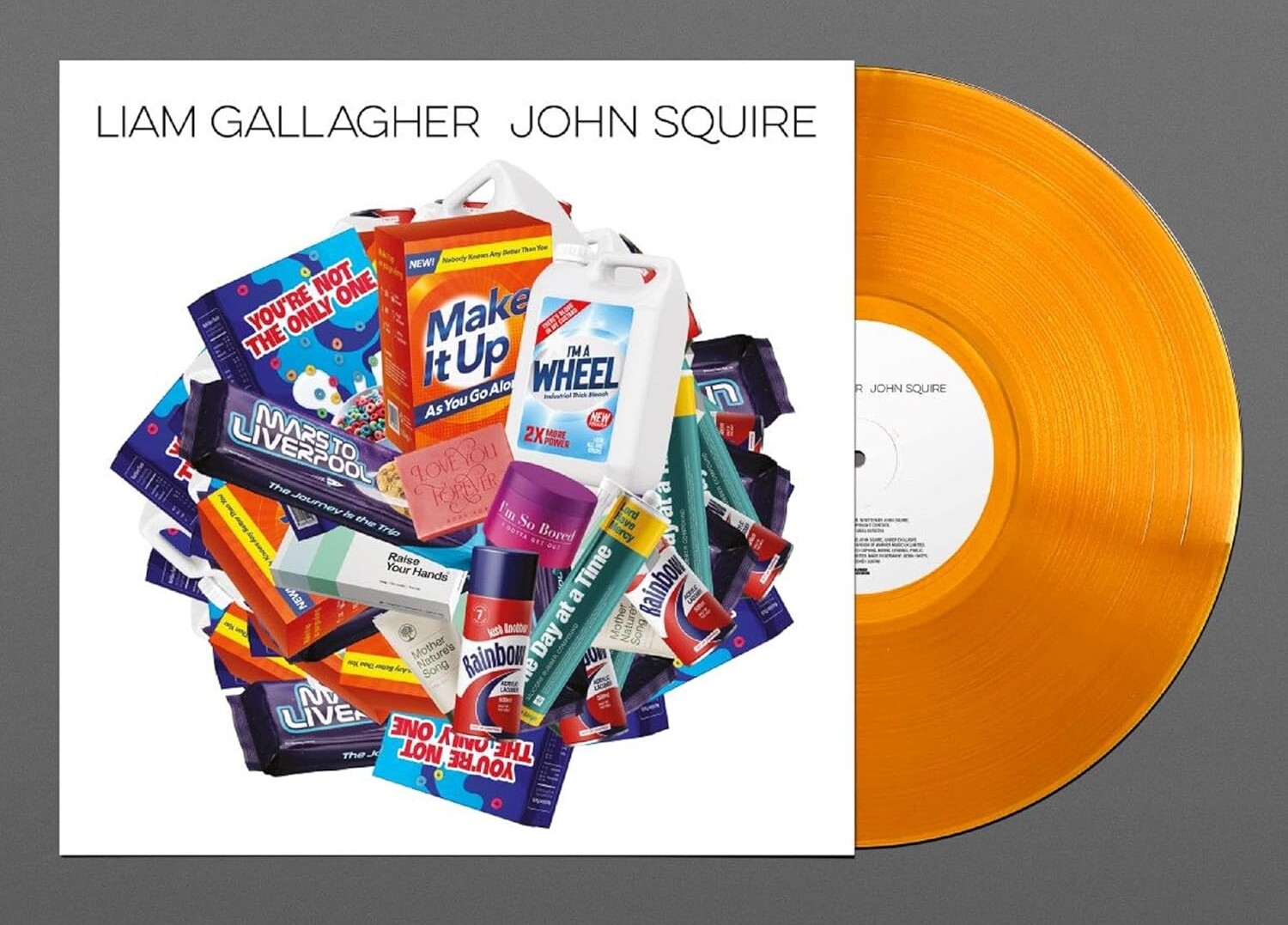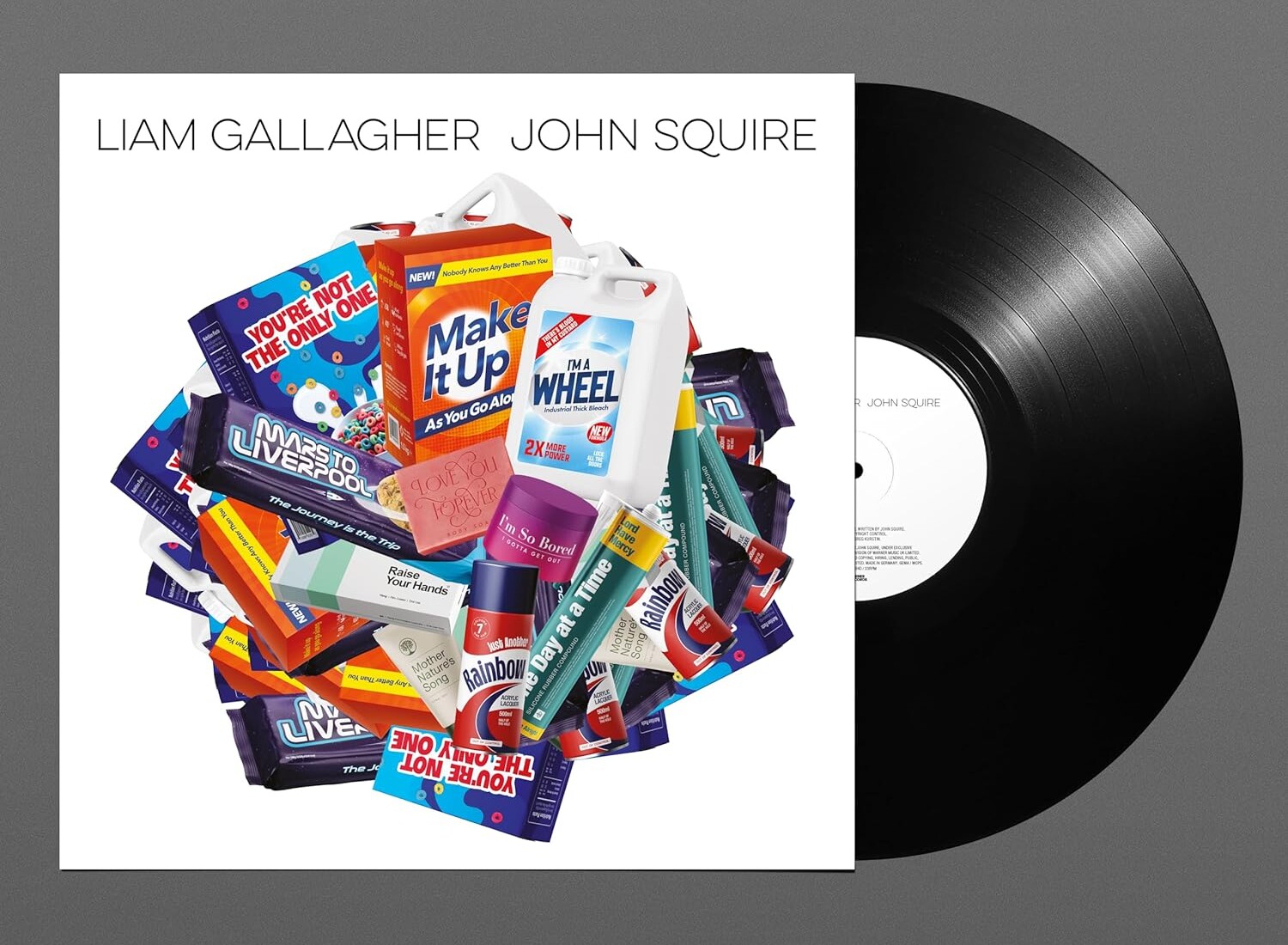Listening to plant-based LP with Gallagher and Squire
By Roy Gregory

Having written about the launch of Evovinyl, a plant-based alternative to traditional PVC/vinyl formulations, I suggested that it would be difficult to reach too many conclusions too soon, as I wasn’t expecting to see the same pressing appearing on both media anytime in trhe near future. So it came as a surprise when I was duly informed by a reader (thanks Geoff!) that the new Liam Gallagher John Squire album was available pressed on both. Cards on the table – it’s not a record I would normally have bought, but intrepid audio adventurer that I am, I duly ordered not just the vinyl and Evovinyl LPs, but in a fit of completist extremism (don’t tell Gove and the UK government) the CD too. I know. I know… musical masochism run amok. Imaging not just paying for all three but having to actually listen to them! Be glad that I did so that you don’t have to
Musically speaking and from a high-end audio perspective, this is far from the ideal material for such a comparison. Having said that, it is also representative of current, mainstream releases, having been mixed by Spike, the most successful post production operator on the planet – at least when measure by presence in the charts. If Evovinyl is the future of the LP record, then it’s worth considering that this album is in some ways representative of its musical future too. Dense, ‘wall of sound’ production combined with ‘loudness wars’ levels of compression make for an impenetrable musical morass, probably aimed at ear-buds rather than full-range loudspeakers. I’m not sure if John Squire was attempting, but he’s certainly produced a ‘Ritchie Blackmore on a (really) bad day’ pastiche – but without the collective power and drive of DP in their pomp. To add a further wrinkle, the Evovinyl disc is pressed on translucent orange material, while the standard vinyl is standard black – and we know that on vinyl discs, the colour affects the sound, with a clear preference for clear vinyl. Having said that, both discs appear to have come from the same metalwork and same plant. Matrix numbers are the same, although they’re hard to decipher on the orange disc as they are superimposed on either side, meaning you are reading one forwards laid over the other, backwards. The only outward difference is the disc identity on the spine of the jacket: on my copies, the standard vinyl pressing ends in 40, the orange Evovinyl in 64. Other colours and editions may well be out there.

Perhaps unsurprisingly, both LPs are preferable to the CD, their superiority such that it’s not worth dwelling on. Put simply, when it comes to presence, colour and musical energy, the optical disc comes up well short of either LP, with sound that’s homogenous, two dimensional and condensed. The 12” discs filling the room in a far more powerful and convincing fashion – and one that’s more appropriate to the music. What I wasn’t ready for was the difference between the two LPs. Listening first to the standard vinyl pressing simply confirmed the overall impressions of the music and production I’d gleaned from the CD: dense, impenetrable and heavy, with precious little grace, subtlety or even visible intelligence. It was bigger and had a bit more purpose about it as well as a broader tonal pallette, but on a musical 9as opposed to sonic) level, it was only marginally more interesting. Feeling obliged to play the entire disc, as well as repeating several tracks to embed them for comparasion purposes, by the time I reached the Evovinyl disc, it had already been a long, long session…

